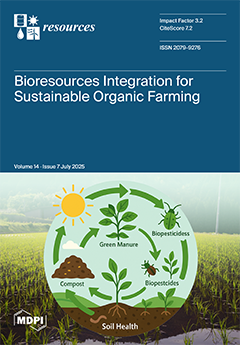Guadua amplexifolia J. Presl is a Neotropical bamboo native to southern Mexico through Central America to Colombia, where it thrives in riparian zones of the San Jorge River basin. Despite its ecological and socio-economic importance, its environmental dynamics and provision of ecosystem services
[...] Read more.
Guadua amplexifolia J. Presl is a Neotropical bamboo native to southern Mexico through Central America to Colombia, where it thrives in riparian zones of the San Jorge River basin. Despite its ecological and socio-economic importance, its environmental dynamics and provision of ecosystem services remain poorly understood. This study (1) quantifies spatial and temporal land use/cover changes in the municipality of Montelíbano between 2002 and 2022 and (2) evaluates the ecosystem services that local communities derive from in 2002, 2012, and 2022, and they were classified in QGIS using
G. amplexifolia. We applied a supervised classification of Landsat imagery (2002, 2012, 2022) in QGIS, achieving 85% overall accuracy and a Cohen’s Kappa of 0.82 (
n = 45 reference points). For the social assessment, we held participatory workshops and conducted semi-structured interviews with artisans, fishers, authorities, and NGO representatives; responses were manually coded to extract key themes. The results show a 12% decline in total vegetated area from 2002 to 2012, followed by an 8% recovery by 2022, with bamboo-dominated stands following a similar pattern. Communities identified raw material provision (87% of mentions), climate regulation (82%), and cultural–recreational benefits (58%) as the most important services provided by
G. amplexifolia. This is the first integrated assessment of
G. amplexifolia’s landscape dynamics and community-valued services in the San Jorge basin, highlighting its dual function as a renewable resource and a natural safeguard against environmental risks. Our findings offer targeted recommendations for management practices and land use policies to support the species’ conservation and sustainable utilization.
Full article





